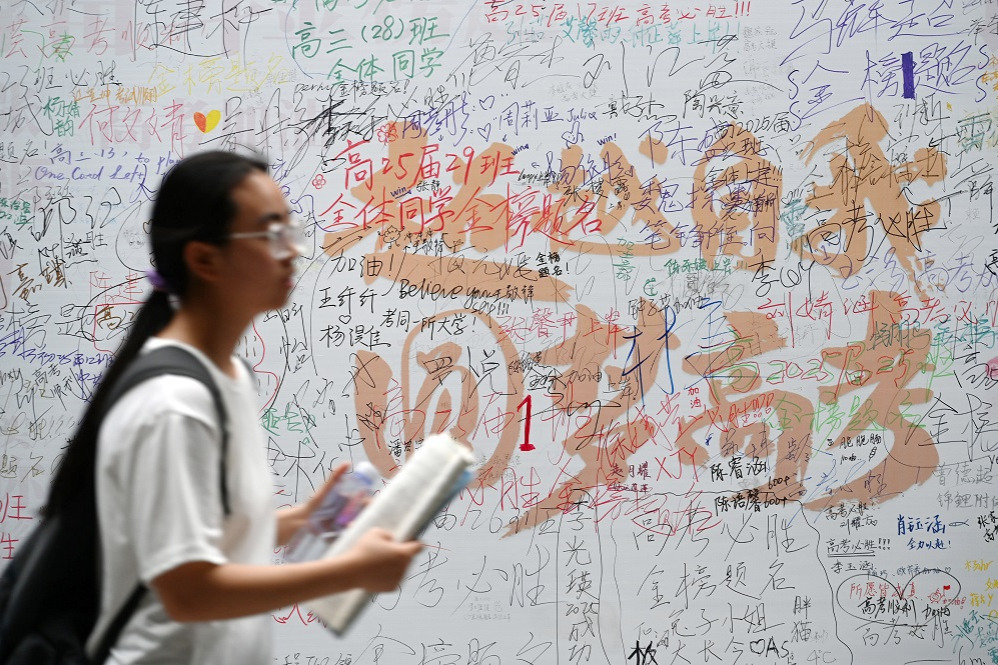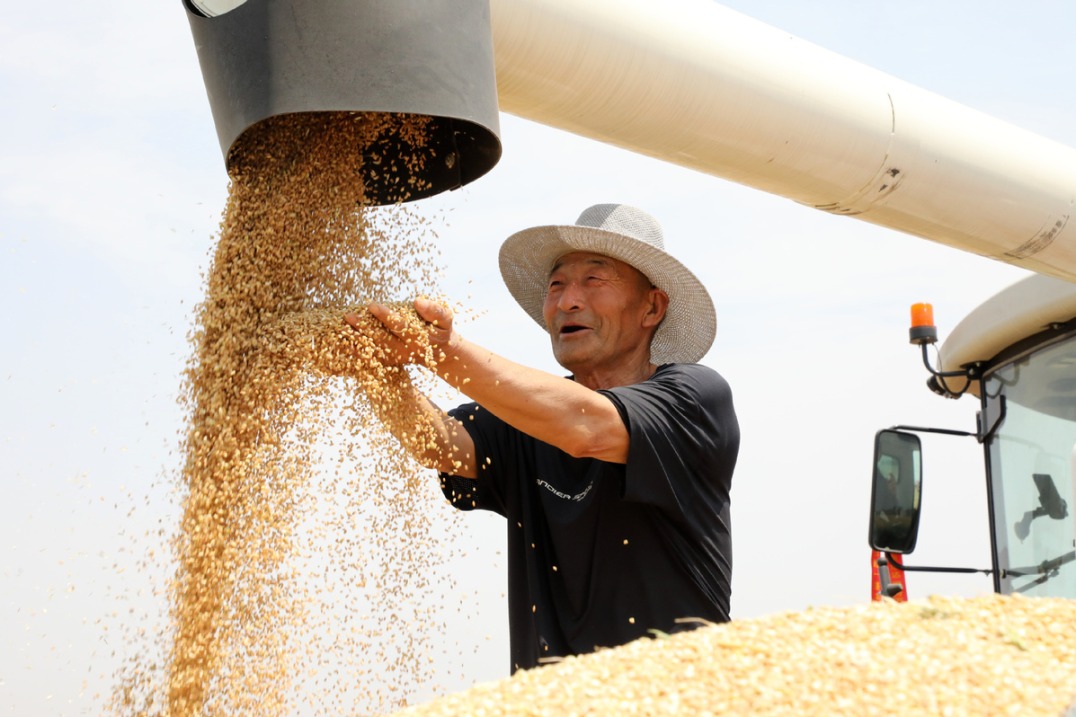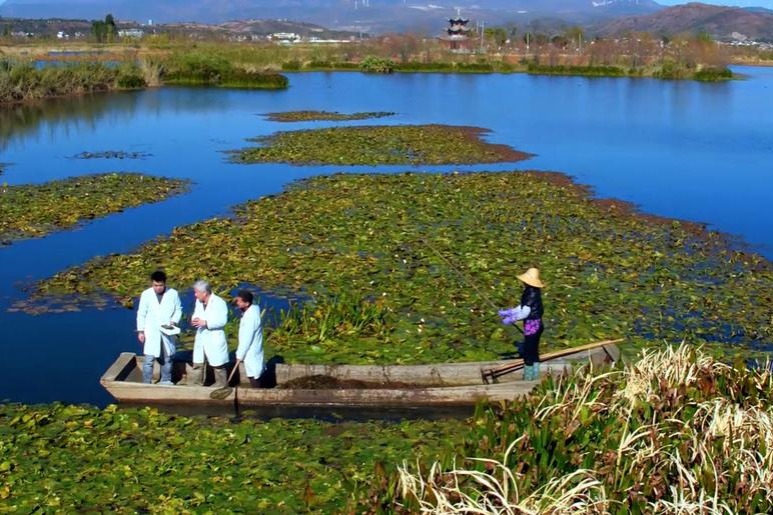Bikes bite back: Streets going cycle-friendly


Trial projects by Beijing municipality may be extended across capital in line with national goals to promote green lifestyle
For cycling enthusiast Jia Feng, riding to work in Beijing is an advantage as it allows him to get in his daily exercise and frees him from the capital's notorious traffic jams.
But cycling is not always a joyful experience. The occasional takeover by cars-the number of which rose by almost 5 million over the past two decades to 6.57 million by the end of last year-of cycling lanes left him with conflicted feelings about life in the saddle.
Of late though, the Beijing resident has found that commuting is becoming increasingly enjoyable as local authorities endeavor to encourage environmentally friendly travel in the midst of a national campaign to promote green transition.
Green development has become a key concern of China's central authorities.
"We will step up efforts to establish a legal and policy framework that promotes green production and consumption, and promote a sound economic structure that facilitates green, low-carbon and circular development," President Xi Jinping said in a report to the 19th National Congress of the Communist Party of China in October 2017, during which he also spoke of initiatives to encourage environmental awareness in families and develop eco-friendly schools, communities and transportation services.
To achieve a fundamental improvement in environmental quality by 2035, China will strive to push green production and lifestyles, according to a proposal unveiled after the Fifth Plenary Session of the 19th CPC Central Committee last October.
Recently, residents near the capital's Second Ring Road were surprised to discover that cycling lanes appeared to have been widened. A closer look revealed what had happened.
Though traces of the original white lines separating the lanes for cars and bicycles-as well as the ones dividing lanes for traffic-remained visible in places, new lines had been drawn to make the lanes for cars narrower and the one for bicycles wider.
For months, teams have been taking advantage of late night hours, when the normally busy road is at its quietest, to carry out changes, using high-pressure water cannons to speed up the process.
According to the Beijing Municipal Commission of Transport, the capital plans to broaden bicycle lanes along every section of the Second Ring Road from 2 meters to at least 3 meters in width.
Other efforts are underway to return Beijing to the reputation it once enjoyed as a cycling capital.
Authorities have managed to renovate over 3,000 kilometers of bicycle lanes in the past five years, either by widening or by removing parking lots that infringed on them, said Jing Lubo, an official at the commission's urban road management, adding that as a result, the proportion of trips made by bikes in the capital has increased from 39.3 percent to 46.7 percent.
Last year, together with the Beijing Traffic Management Bureau, the commission launched multiple pilot programs to further facilitate commuting by bicycle. First, road signs for bicycles were put up along some side roads, and five special traffic lights were installed to make it easier for cyclists to turn left at crossings.
Without the special lights, Jing said that cyclists have to follow two sets of traffic lights when turning to remain on the right side of the road as traffic regulations require.
"Based on the experience of the pilot programs and further investigation and surveys, we may introduce the special signs and traffic lights across the city," he added.
Beijing authorities also plan to build bike routes along 12 waterways, which will help connect cycling networks between the Second and Fourth Ring roads and create a green transportation network.
The creation of this green, non-motorized network is high on the municipal government's agenda.
Beijing Mayor Chen Jining has led at least three investigation tours since October, each time by bike.
Jia, a public servant who used to ride to work a decade ago, began to commute by car as the number of vehicles in Beijing increased, despite his office being only 7 kilometers from home.
The 58-year-old went back to cycling last year because of the pandemic. He stopped swimming three times a week out of concern of being infected and chose to ride to work as an alternative form of exercise.
After cycling to work for the last 13 months, Jia has found that it is a much better means of commuting.
"In total, I have ridden over 6,000 kilometers, and I feel really good," he said, smiling.
"First of all, I am more healthy, and a number of physical indicators have improved."
He said that cycling has saved him time and money as well.
It takes Jia 20 minutes to ride to work, compared to half an hour by car, and he's gained back the 10 hours a week he previously spent swimming. As a result, he saves about 12,000 yuan ($1,865) per year by cycling. "I'm also contributing to pollution control and carbon emission reduction," he said.
Despite occasional trouble from cars, Jia said traffic conditions for bikes have changed for the better thanks to efforts by the municipal authorities to improve the cycling network.
In addition, Beijing authorities also rolled out an incentive program to encourage residents to commute by bike in late 2019.
By registering with Baidu Map or Gaode Map, residents are given a special low-carbon account. They win credits when they use the maps to walk or ride to their destinations. Using public transportation is also rewarded with credits.
The credits can be exchanged for coupons and access to some online platforms that normally require paid subscriptions. Users can also donate the credits toward tree planting or bridge construction for public welfare, while those with top rankings may be lucky enough to sell their credits on the capital's carbon market.
The program has attracted over 24 million users, and the trips they have made have helped reduce carbon dioxide emissions by about 28,000 metric tons, Zhao Zilong, deputy head of the Beijing Municipal Commission of Transport, said at a cycling publicity event on Earth Day earlier this year.
Jia said he looks forward to seeing an increasingly green Beijing as local authorities make sustained efforts to promote environmental friendly travel.
"As more people turn to bikes, fewer will drive and traffic will move even faster, so both drivers and riders will be more comfortable. This will make the city greener and reduce its carbon footprint," he said.

- Remains of former senior military official cremated
- China strives to build South China Sea into a sea of peace, friendship, cooperation
- Xi, Myanmar leader exchange congratulations on 75th anniversary of diplomatic ties
- Why Guangdong-Hong Kong-Macao Greater Bay Area is a must-watch for global businesses
- Hefei mobilizes public to build spiritual civilization
- Experts urge stronger civil aviation legislation, cultivation of legal talents





































